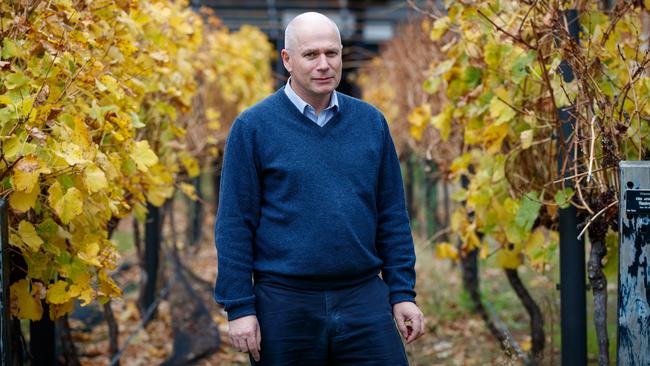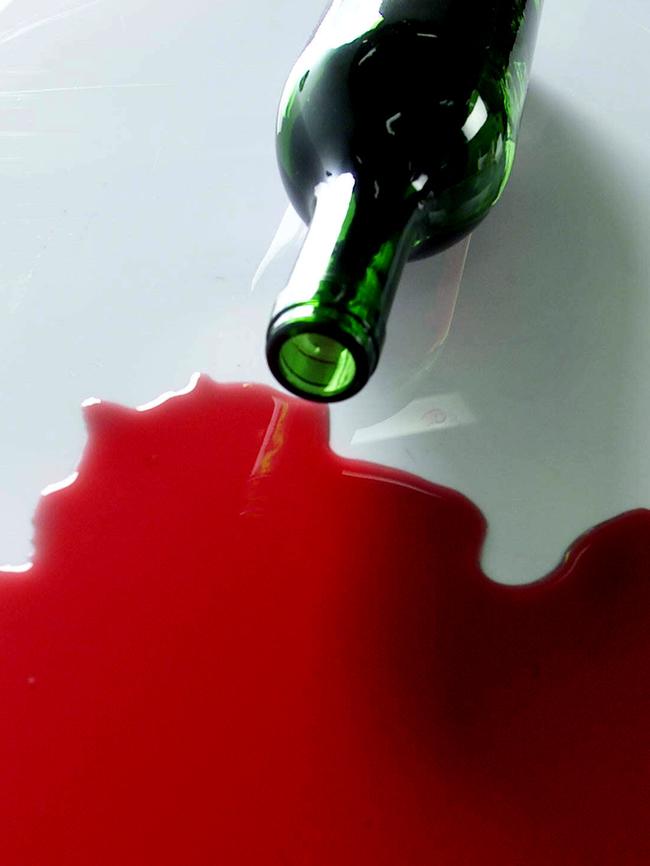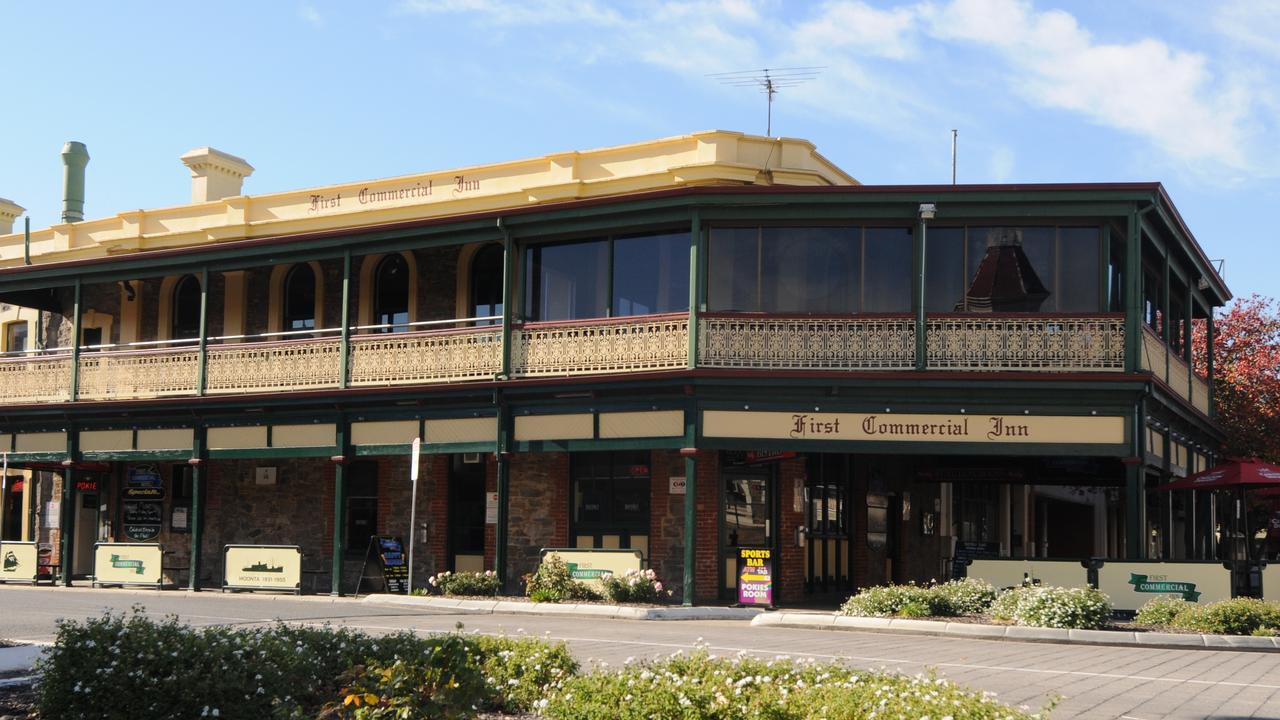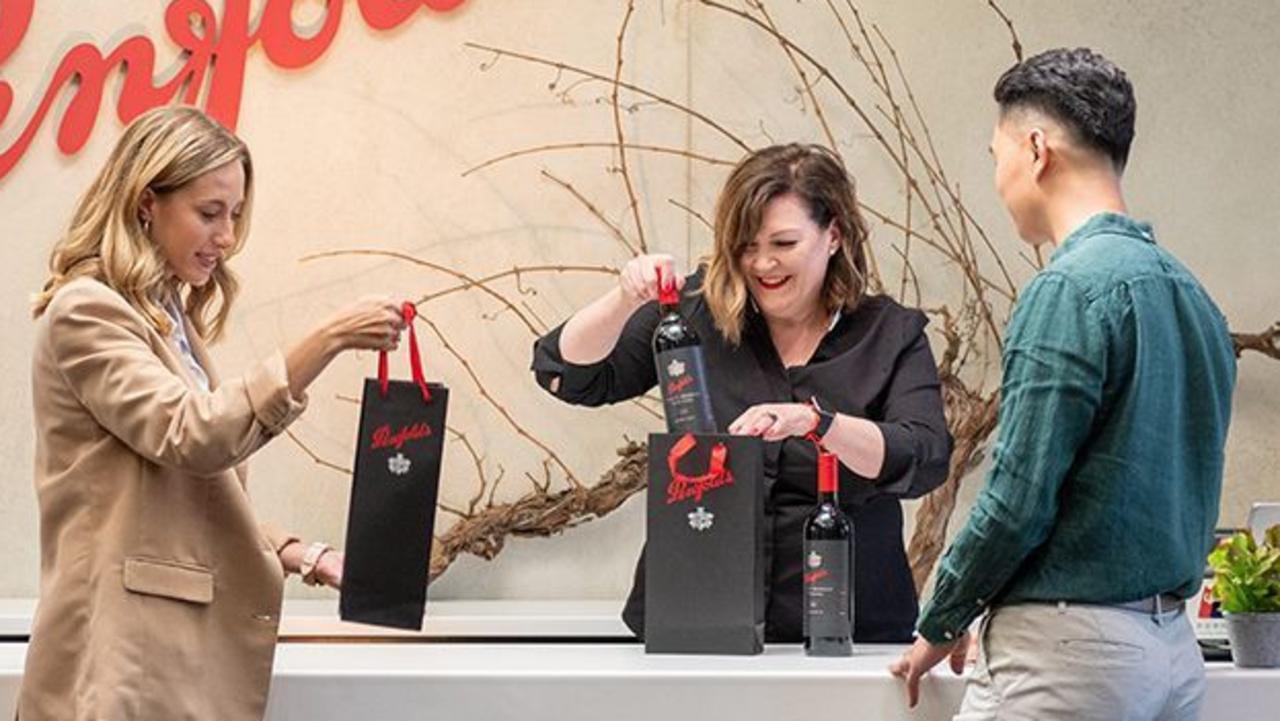Growers expect glut of red wine grapes as tariffs, freight problems hit – and we’re drinking less
A huge glut of red wine grapes is expected in SA as China’s tariffs bite – grape growers are contemplating the horror spectre of the days when “excess” vines were ripped out.
Food & Wine
Don't miss out on the headlines from Food & Wine. Followed categories will be added to My News.
South Australia’s red wine grape growers face an uncertain future as the Australian wine industry deals with a glut of red wine.
In what has been described as the “perfect storm”, tens of thousands of shiraz and cabernet grapes could be wasted in the Riverland alone this vintage, as wineries and growers scramble to adapt to a drop in demand and increased costs of production and shipping.
Brian Smedley, chief executive of the South Australian Wine Industry Association, said “we’ve got a lot of wine that hasn’t been sold in tanks; in wineries”.
“In terms of understanding the problem, we had the highest vintage we’ve ever had in 2021,” he said.
“We’re not drinking any more wine (as a country). We’ve been able to sell additional wines to existing markets – SA sells to about 96 countries, and there’s opportunity in each of those countries, but the competition is bigger than it is in China. It’s not really going to get rid of all the wine that’s being made.”

Mr Smedley said $1.2bn worth of trade – $700m for South Australia – was lost as a result of the China trade dispute.
Jim Godden, chief executive of the CCW Co-operative, which represents more than 500 grower members in the Riverland, said there is “a lot of concern” among growers. “They’re looking ahead and going, ‘what should I be doing?’” Mr Godden said.
“Growers may continue in the industry, they may exit the industry, they may remove some vines, they may diversify into other crops.”
The Riverland is the largest South Australian wine region, producing around 40 per cent of Australia’s crush.
While the issue of oversupply is not new – there was a government-funded vine pull scheme in the mid-80s, as well as a GFC-caused glut in 2008 – Mr Godden said the combination of China tariffs, a change in consumer consumption behaviour and issues around global freight post-Covid made the situation worse.
“I don’t think we’ve seen the perfect storm of these three things at one time,” he said.


CCW is in discussions with its biggest customer, Accolade Wines, which has indicated it does not require the amount of grapes stipulated in current contracts for the 2023 vintage. Proposals include letting grapes go to ground, mothballing the coming vintage and pulling out vines for alternate varietals or crops, such as almonds.
“Thirty-two per cent of (shiraz and cabernet) grapes aren’t required,” Mr Godden said. “That’s about 43,000 tonnes that could be wasted … but that hasn’t been grown yet. Agriculture and weather go together – frost, hail, rain, all of these things can have an impact of the amount of fruit harvested between Australia Day and Anzac Day next year.”
SA’s second largest wine producer Langhorne Creek is also feeling the fallout. Langhorne Creek Grape & Wine’s executive officer Lian Jaensch said “it’s a sombre mood out there”.
“The word around is that it’s going to be a tough two years,” Ms Jaensch said. “But there’s clearing happening and redevelopment happening, so still a level of optisim to invest in the business.”
The Advertiser understands Accolade is meeting with Riverland grape growers next week.



